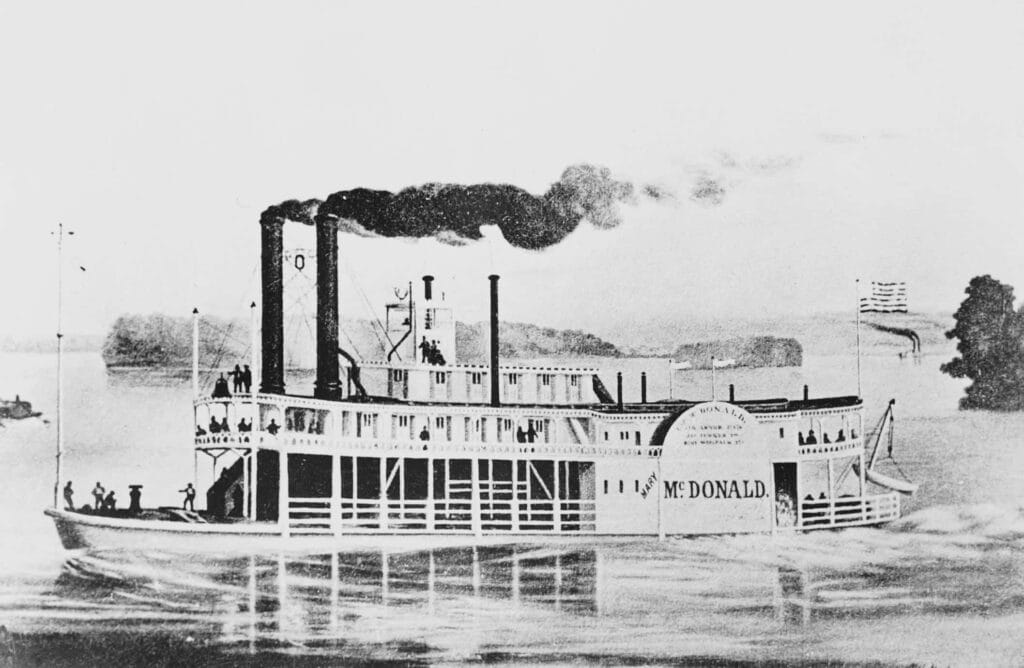
The side-wheeler Mary McDonald was tied up at Gilham’s Landing in Saline County when she caught fire and was destroyed. The boat had been built in 1866, not an atypical lifespan for riverboats, especially ones that plied the waters of the hazardous Missouri River.
In her years of service the Mary McDonald had been chartered by the Omaha Packet Company and then the Ouachita Packet Company. She was known to have sailed far up the Missouri River, as far as Fort Benton, Montana. At the time she burned at Gilham’s Landing, which was near modern-day Waverly, her holds were full of hemp, which she was transporting from Kansas City to St. Louis.
Piloting a riverboat on the Missouri River in the 19th century was fraught with numerous dangers, making it one of the most perilous occupations of the era. The river’s shifting channels, hidden sandbars, and unpredictable currents posed constant threats to navigation, often causing boats to run aground or capsize. Additionally, seasonal floods and floating debris, such as uprooted trees, increased the risk of collisions and damage to the vessels. The river’s muddy waters reduced visibility, making it difficult to detect obstacles until it was too late. Harsh weather conditions, including sudden storms and dense fog, further complicated the journey, putting both the boat and its crew at the mercy of nature. Moreover, the lack of accurate maps and reliable communication systems meant that riverboat pilots had to rely heavily on their experience and intuition, often navigating through uncharted and treacherous waters. The combination of these hazards made riverboat piloting on the Missouri River a dangerous and often life-threatening profession. There are almost as many days in Missouri history where a riverboat sank, caught fire, or was otherwise destroyed as days without.






